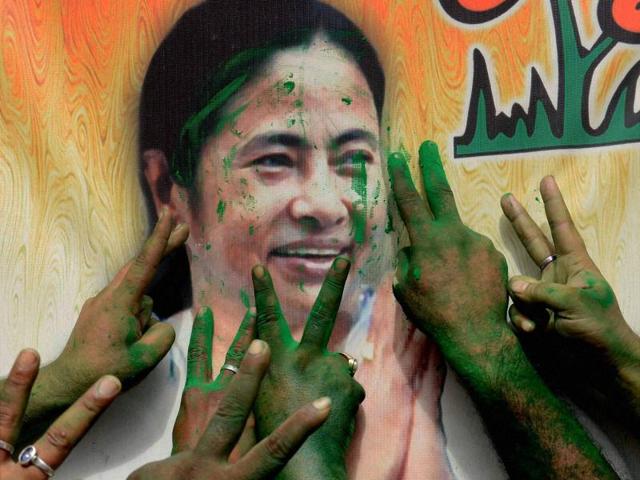How Mamata Banerjee scripted the decimation of Left in West Bengal
The remarkable victory for Banerjee, who left the Congress to form her own party in 1988, also shows that revival of the Left in Bengal is still a far cry.
In 2011, Banerjee defeated the Left with the help of the Congress. Five years later, she waged a lone battle against an alliance of the Left and Congress and crushed the communists.

The remarkable victory for Banerjee, who left the Congress to form her own party in 1988, also shows that revival of the Left in Bengal is still a far cry.
The “cut and paste” alliance of Left and the Congress failed to appeal to voters. Parties that had been killing each other until a few years ago suddenly turned into friends to take on Banerjee. In many areas, the vote transfer between the Congress and the Left did not happen due to the uneasiness among the supporters of the two sides.
Also, the Left-Congress alliance failed to project any face while Banerjee spearheaded the party’s campaign. She showered sops—from cash to local clubs to cycles for students—and won many hearts. Political observers added that the Trinamool leader invested a lot in the rural sector and the move paid dividends.
The Left also lost the plot during the campaign. While it spent hours attacking Banerjee, the chief minister remained focussed on the development agenda. “During the last five years, Banerjee travelled extensively in the districts, personally monitored projects and interacted freely with the locals. All these added value to her political goodwill,” said a Banerjee aide.
The chief minister steadfastly refused to acquire fertile land for industries. While it discouraged big investors to return to Bengal, the rural Bengal, which has a low per capita land holding, felt assured -- a stark contrast to the Left era when attempts to acquire land led to the death of protesters in Nandigram.
In a three-corner fight with the BJP also trying to gain ground, the Trinamool leader got a solid backing from the 34% minority population of the state—a deciding factor in many seats.
Banerjee not only emerged as the undisputed leader of the eastern state but this victory will also help her consolidate her position in a possible third front initiative for 2019. She had already been in touch with leaders such as Nitish Kumar, Naveen Patnaik and Arvind Kejriwal. With the second consecutive win in the state that gives 42 MPs in Lok Sabha, Trinamool is likely to be a better choice for the Third Front leaders than the Left.
As an administrator, Banerjee will be under more pressure to deliver and appease the rising expectations from her voters. She may have to re-look at her policies that had so far not encouraged industries to return to Bengal. But her first priority must be to put a leash on political violence as Bengal has already earned notoriety on that aspect.





